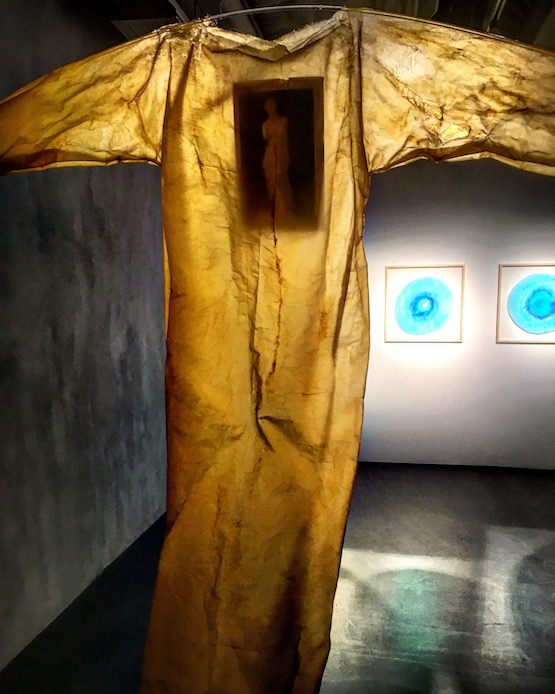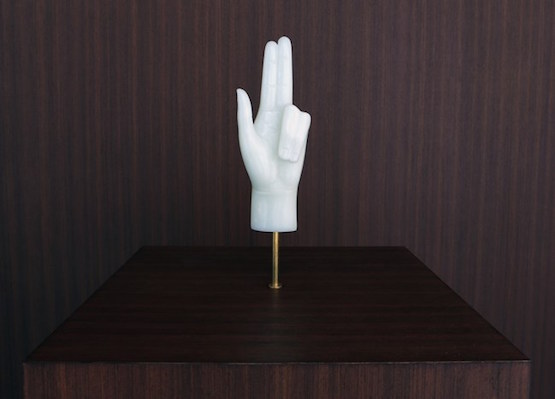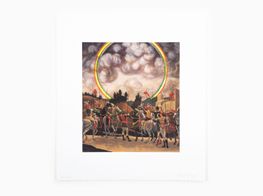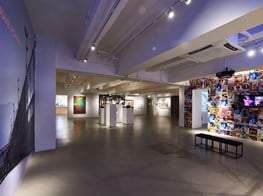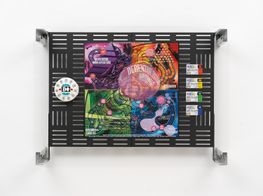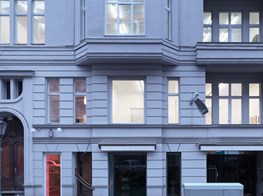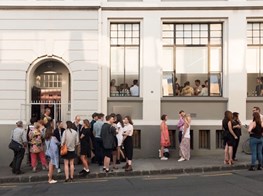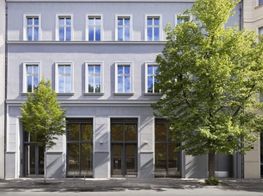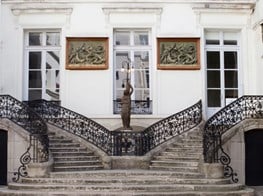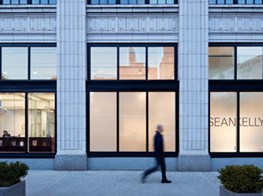Four exhibitions to see in Hong Kong this Spring 2016
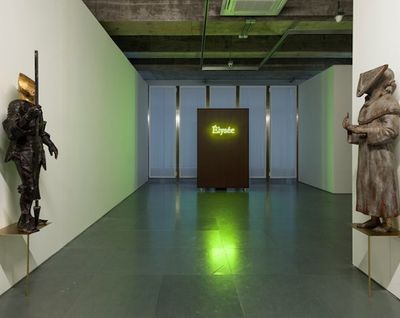
Afterwork
at Para Site
19 March to 29 May 2016In a city where the problems and issues facing migrant workers—who make up approximately 4% of the population, and are mainly women—are seldom addressed, and where stories of injustice and tales of domestic-helper abuse by employers have been making headlines in the past couple of years, Afterwork is timely.
Afterwork is a continuation of Para Site’s ongoing Hong Kong’s Migrant Domestic Workers Project, a project aimed at engaging the domestic worker community through collaboratively organised public programmes and commissioned artist research. The exhibition offers a critical look at issues that resonate both locally and internationally, touching on the subjects of displacement, gender, labour, migration, privacy and housing through a collection of installations, paintings, sculptures and films. It encourages visitors to take into consideration representations of migrant workers, often beset by stereotypes and racism. Curator Cosmin Costinas explains the exhibition tries to create interior psychological moments, that ‘force us to ask what it’s like to live in these circumstances’.
The exhibition includes work by emerging and established artists: a number who are or have been employed as domestic workers from Hong Kong and the region. Notable works include a series of black and white photographs by Filipina street photographer, Xyza Cruz Bacani, who used her days off as a domestic worker in Hong Kong to shoot photographs of the city’s street-life. There’s the video by Brian Gothong Tan, Imelda Goes to Singapore (2006), which reimagines Imelda Marcos as a domestic worker in Singapore, singing her favourite song as she undertakes her daily cleaning chores. It is a tongue-in-cheek stab at the Marcos regime, which initiated the domestic workers scheme in the Philippines. And Chilean artist Alfredo Jaar presents a series of powerful photographs submerged in blue neon-lit trays of water, which call to mind the current Syrian refugee crisis, and the struggles of migrants adjusting to a new life in a new country.
The exhibition not only focuses a spotlight on the elephant in the room—the treatment of migrant workers, and their legal and social disempowerment—but it also highlights the problem of access and subverts the notion of elitism in the art world by putting it in the hands of the disempowered and voiceless.
Lung Yuet Ching, Joyce, Susan, 2016. Porcelain sculptures of cleaning products.
Social Fabric: New Work by Mariana Hahn and Kwan Sheung Chi at MILL6 Foundation
22 March to 21 April 2016
The MILL6 Foundation is the latest non-profit art space to be making a dent on a very commercial Hong Kong art landscape. Founded last year and led by former Sotheby’s director, Angelika Li, the organisation is currently housed in the centrally located ‘annex’ of the Nan Fung building. It will re-locate to a 30,000 square-foot exhibition space in a former Nan Fung mill in 2018. For their second show, the space presents Social Fabric, a joint exhibition by Mariana Hahn and local Hong Kong artist Kwan Sheung Chi.It is an exhibition that is at once intimate and impersonal, bringing together works that question the social and political fabric of our lives. While the works couldn’t be more different: Hahn’s has a soft, and more feminine and intimate quality to it, while Kwan’s installations are hard, masculine and impersonal, the yang to Hahn’s yin; yet, they are united in their quest and questioning of Hong Kong identity and histories.
Hahn does so through fabric. The first overseas artist to join MILL6’s Artist-in-Residence programme, her practice focuses on the medium of silk; a fabric with a history rooted in China. Her exhibition work is the result of research undertaken during the residency on the zishunü, the so-called ‘silk sisters’ of the Pearl River delta. A sisterhood of unmarried women, they made vows to remain so, devoting their lives to making silk: from harvesting the silk worms, to spinning the fine threads. In the 1940s some were said to have fled to Hong Kong’s island of Lantau, where two sisters are still rumoured to live. Hahn went to the island in search of the story of this sisterhood. While she didn’t find them, she did come across the island’s last surviving fishermen, from whom she learned to weave fish nets, also used in her work. The artist turns her encounter with histories, craft and tradition into visual poems—through video, drawings and installation—offering us a peek into worlds that few have experienced, and that due to rapid development are now disappearing. Suspended from the ceiling of the space are three silk dresses made by Hahn, crystalised and hardened because of exposure to salt water, they hang like shed skin. For Hahn, water carries memory; the dresses are memories made visible, memories given a physical body. They are a reminder of the silk sisters, and of the people whose livelihoods and lives were dependent upon the surrounding body of water.
While Hahn’s works explore the loss of Hong Kong’s craftsmen and women to the march of progress, Kwan’s works grapple with the city’s more contemporary social and political concerns. His large immersive installation, Room (2016) is suggestive of the tensions and anxieties brought about post-Chinese Handover and post-Umbrella Revolution. The work highlights Hong Kong people’s current questioning of and confrontation with its identity, and the increasing concern over loss of freedoms under encroaching Chinese rule. A carpet of red flag pins greets visitors at the entrance of a small white room. They appear to be Chinese flags, but on closer inspection in place of five yellow stars is a Bauhinia flower—the national symbol of Hong Kong featured on its flag—suggesting the subsumption of one national identity by another. Inside the white room, visitors are confronted with a blinding white light; it makes one feel exposed and vulnerable. This feeling of vulnerability and anxiety is heightened by the knowledge that you are under surveillance from the moment you stand upon the threshold of pins; a wall of monitoring screens is reflected in the mirrored automatic doors leading into the installation. Another door inside the room automatically opens, and you unquestioningly walk into a smaller walled off corner of a room where you are trapped, until another person on the other side triggers the sensor to open the door. If the experience makes you feel powerless then Kwan has succeeded in getting his message across. The work is an ironic commentary on the changing political and cultural landscape of Hong Kong, of power relations, and privacy.
Exhibition view, Mariana Hahn at MILL6 Foundation.
HACK SPACE, presented by K11 Art Foundation and Serpentine Galleries
21 March to 24 April
While Art Basel Hong Kong kicked off on Tuesday 21 March, so did the fight between Apple and the US government in a Southern California Federal Court. Essentially, the fight boiled down to Apple’s refusal to allow the US government certain liberties with the security of our iPhones. It’s about whether the government should be allowed to control and manipulate our technology devices, and what this will mean for all of us in the future. The future, as Nam June Paik once declared, is now.The K11 Art Foundation and Serpentine Galleries’ group exhibition, HACK SPACE is about now. Co-curated by Hans Ulrich Obrist and Amira Gad of the Serpentine Galleries, it takes as its theme hacking space, ‘the idea that place, territory and infrastructure can be radically adapted in unorthodox ways to solve problems.’ The theme of shanzai, the culture of fake or pirated products across the border in China, is woven into the idea of hacking space to reflect on innovation through the adoption of unconventional practices to gain competitive advantage.
Politics, technology, surveillance, and a dollop of dystopia all intersect in this exhibition. Eleven China-based artists, including Cao Fei, Firenze Lai, Cui Jie, Xu Qu, and Tao Hui, enter in dialogue with New Zealand artist Simon Denny’s travelling exhibition Products for Organising—although at times this dialogue seems tenuous at best. Denny, who made his name at the 2015 Venice Biennale with his conceptually heavy installation based on Edward Snowden’s leaking of classified information from the National Security Agency in the United States, is one of the leading figures of a generation of artists employing the materials and language of technology, advertising and corporations to comment on themes of corporate management, consumerism, dissemination of information, and the role of technology as cultural and political disruptor. In HACK SPACE he presents a series of vertical vitrines of computer machinery, called ‘Modded Server Rack Displays’, loaded with mixed media and objects that suggest material ‘files’ of information. The information and objects contained within these vitrines map out the organisational logic of hacking communities. Several donut shaped installations reference a recurring theme for Denny, ‘Holacracy’ a ‘distributed decision making process’ employed by Apple and engineers at British GCHQ, which subverts pre-existing top-down hierarchical work models used by most companies. It is a structure that allows for greater openness and innovation, mirroring the values and practices of hacking culture. Denny’s works create a skyline across the room, which leads visitors to a landscape of the others artists’ works displayed on temporary pedestals and tripods.
On one platform stands a large TV screen displaying Rumba 2: Nomad (2015), a video work by Cao Fei, who recently opened a solo exhibition in New York, at MoMAPS1. The absurdist film features robotic vacuum cleaner discs (and some chickens), which resemble small spaceships sucking up dirt and debris on the site of a recently demolished low-rise building. It is a critical and comical commentary on Beijing’s ever expanding urban sprawl, questioning the cost of innovation and progress. Beijing based Xu Qu, presents a series of metal columns in a room just off the entrance to the exhibition. Intersecting the metal columns are spindly umbrella spokes straining to support the two ends of the oppressive columns. There is tension and uncertainty created by the works as the spokes teeter on the brink of being crushed, frozen between the impossibility of accomplishing such a feat and the hope of success. Another none too subtle reference to Hong Kong’s uneasy relationship with China after the Umbrella Revolution of 2014 which brought the city into direct ideological confrontation with China.
Laurent Grasso: Élysée at Edouard Malingue Gallery
21 March to 30 April
Resplendent. Edouard Malingue Gallery’s solo exhibition by Laurent Grasso was definitely one of the highlights of Art Basel week’s string of gallery exhibitions. At the entrance of the exhibition, visitors are greeted by two sculptures: one a religious icon, a figure of a saint with an triangular anvil shaped head, the other a Roman soldier who’s head had has also been replaced by a golden horse hoof shaped object, rendering them surreal objects. They guard the entrance of a site that seems at once sacred and awe-inspiring. Your eyes are immediately directed to the end of an axis of space where a wall bearing the word Élysée, referring to the presidential palace of France, glows in neon yellow.
Inside the gallery space Grasso brings together various objects, architectural interventions and mixed media works: tiny detailed and back-lit paintings depicting the golden interior of palaces glow on the walls; a life size wooden cabin stands to one side inviting visitors to hide within; golden sculptural geometric reliefs are lit from above so they resemble some ancient temple relics; and a film shot inside the Salon Doré of the Élysée Palace, the personal office of the President of the French Republic, which is rarely open to the public. They are individual parts brought together in a discourse with one another to convey a story of power, and create an atmosphere of beauty and magic.
Past and present, reality and fiction blur together to create a mythological space that inspires a hushed reverence; perhaps it is the golden light reflecting off works, emanating from behind the paintings, and from the screen that calls to mind religious icons or the extravagant palaces of Versailles and The Hermitage. But then, that is Grasso’s point, to show gold as a symbol of wealth and power throughout the ages. The value and weight we ascribe to it, the desire with which we pursue it, the awe it inspires, and the impact on the course of history in order to attain it, is reflected all around us in the exhibition space. —[O]
Laurent Grasso, Main de pouvoir, 2016. Marble, 21.1 x 6 x 3.5 cm. Image courtesy of Edouard Malingue Gallery.


